
Live data from NICOLOSI (CT), Etna Park, Sicily
 |
ETNA RADIO OBSERVATORY
Live data from NICOLOSI (CT), Etna Park, Sicily |
To see with google map where we are, click on this link: https://maps.app.goo.gl/P1pUWBymXCV3caccA (Lat. 37°37'52.45"N - Long. 15°1'20.26"E)
System 1: INDUCTION COIL EC200
The rods are of two different lengths: 2 meters for the central part of the core and 50 cm for the more peripheral part, located directly under the coil. A low-noise preamplifier, built with an OP27G front-end as a balanced differential amplifier, provides the necessary amplification to drive the line input of the sound card directly. The power supply comes from a remote stabilized 12 V power supply via RG58 coaxial cable. ELF and ULF MAGNETIC FIELD Here below the first LIVE spectrogram, updated every hour. It shows the last 8 hours ELF activity (magnetic field), received by our coil. 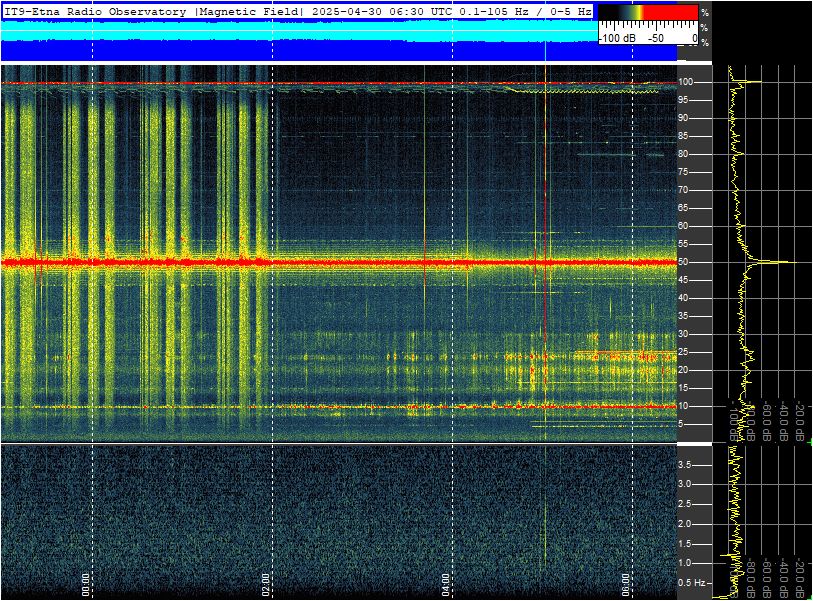
Bottom part zooms on the 0,1 to 4 Hz range. FFT resolution 10,5 mHz, scroll time 40 seconds. Following the same signal, in 1 hour strips. 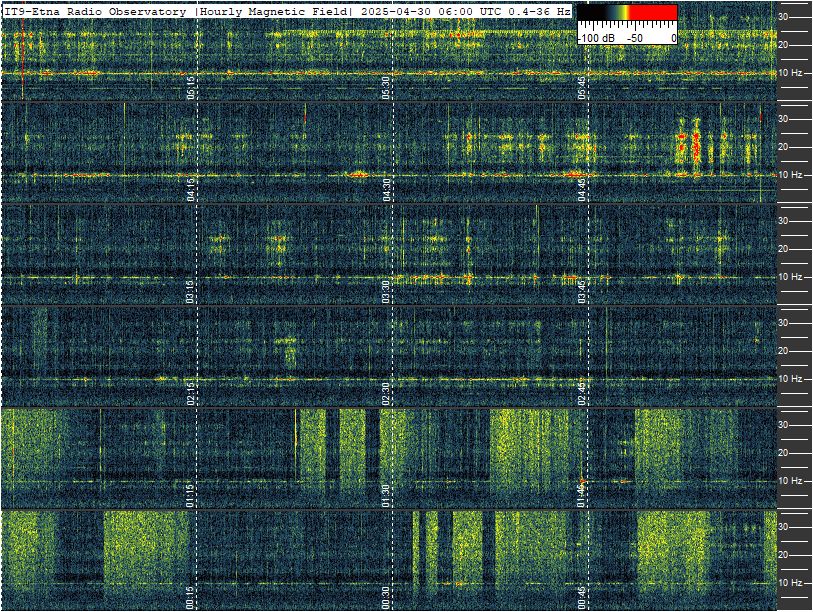
This is the frequency range of schumann resonances, and a zone of deep interest to us, for the study of possible interaction of magmatic flow with the terrestrial magnetic field. FFT resolution 168 mHz, scroll time 4.6 seconds. The last spectrogram from the coil shows the daily stripes, which are useful for comparing day-to-day activity in geomagnetic pulsation frequencies and finding any volcanic anomalies. 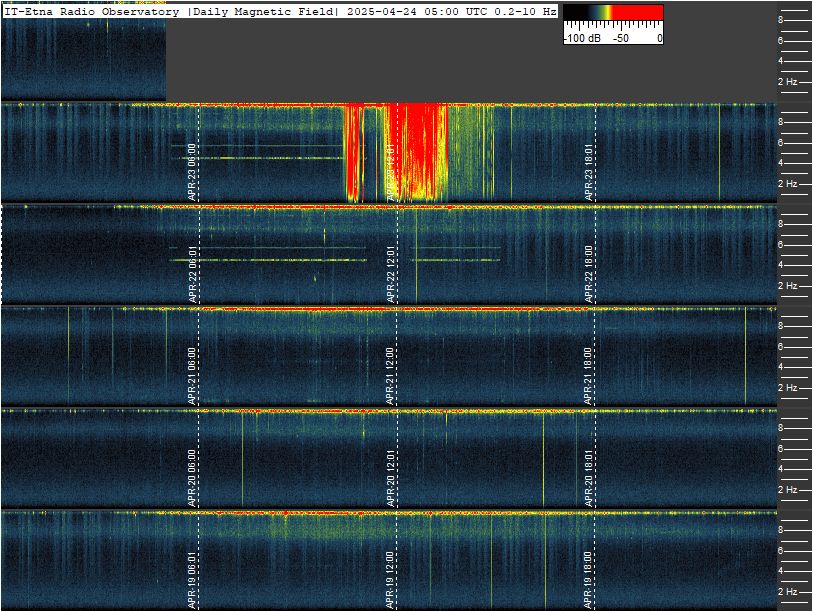
Scroll time 109 seconds and FFT resolution 10,5 mHz. System 2: ORTHOGONAL LOOP
 Also located in the park, away from buildings, and powered remotely. The first processing is broadband and includes frequencies from a few Hz up to 22 kHz: 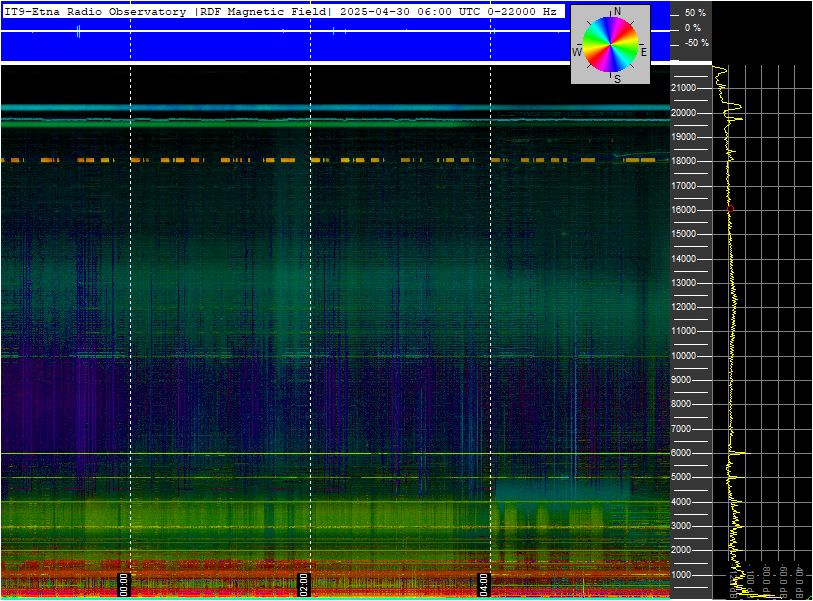 Scroll time 11 sec FFT resolution 91 mHz. The signal is strongly disturbed by the unavoidable presence of network harmonics, generated by switchin power systems now in use everywhere. Therefore, the self-adaptive FFT filter included in spectrum Lab was used, achieving a good final result. RDF low frequency magnetic field. Color indicates signals incoming direction. 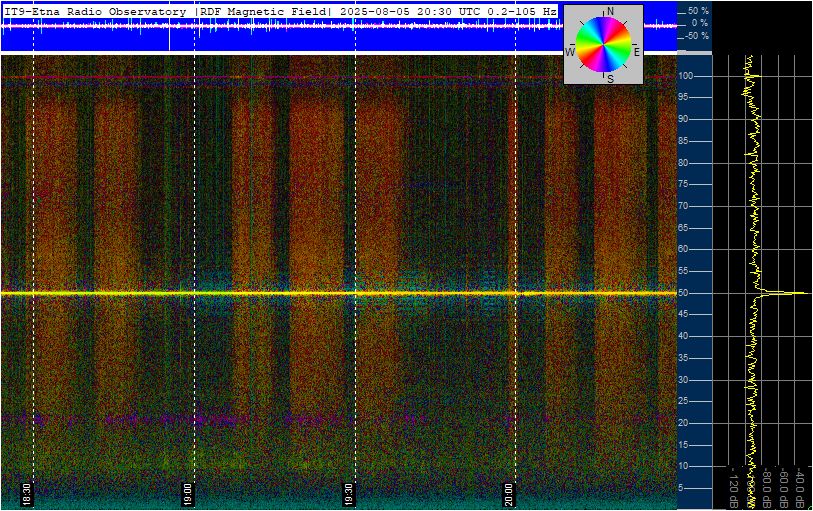 Scroll time 11188 mS , FFT resolution
84 mHz. No filter was applied on this RDF
processing.
Scroll
time 4600 mS , FFT resolution 168 mHz. No filter was
applied on this RDF processing.And by the same reception system, the hourly multi strips: 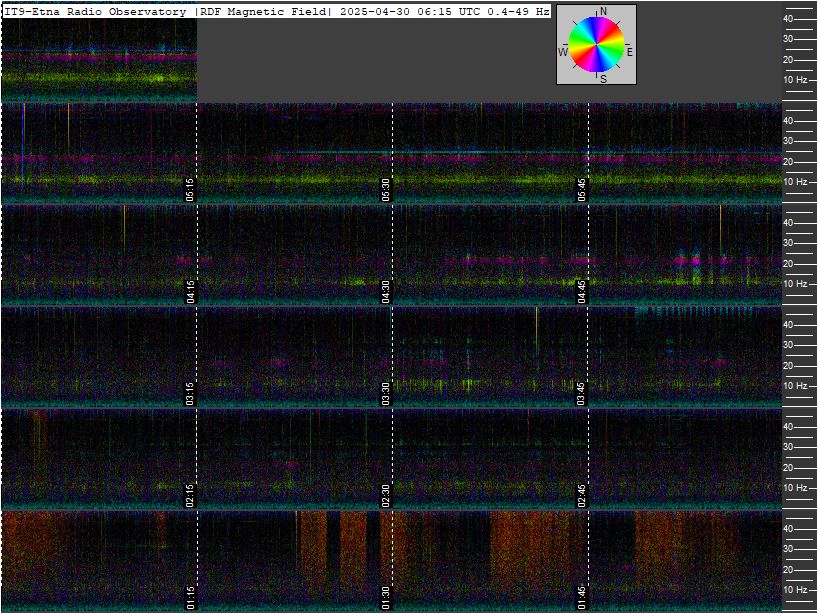 System 3: GEOPHONE Lastly, a vertical mass-suspended geophone. It is placed in the proximity of the computer. The signal is preamplified with single-stage low-noise OP27 opamp configured for 43 dB gain.  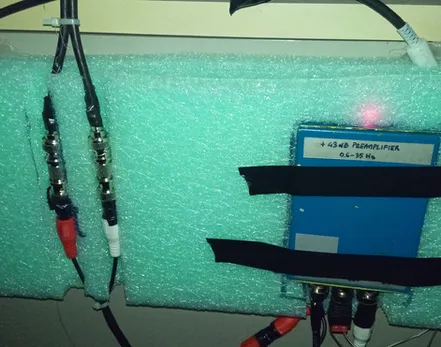 With it, earthquakes due to volcanic activity and paroxysms during eruptions are displayed. In addition to ordinary seismic activity up to more than 1000 km away. It is an important comparative reference in the analysis of signals received with induction coil. Geophone Multistrip hourly representation: 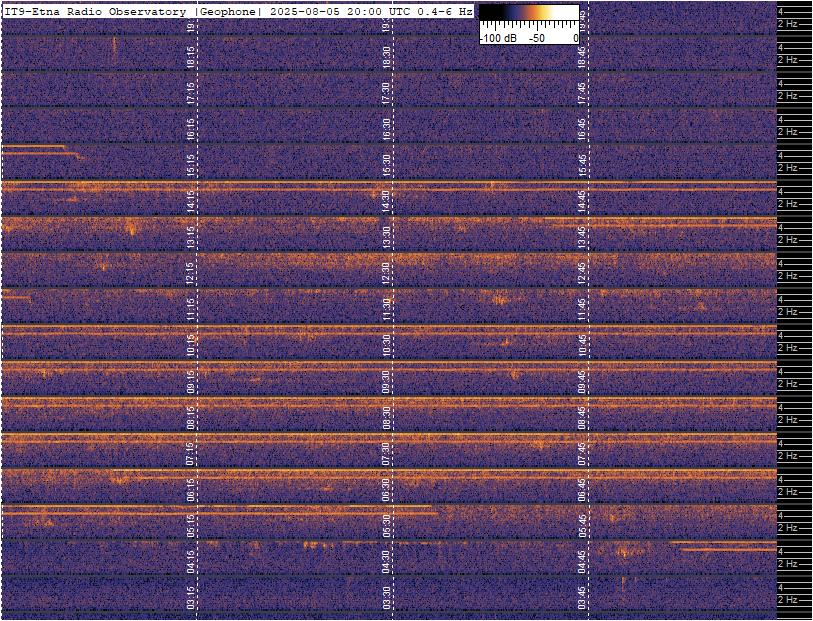 Scroll time 4.6 sec, updated every hour. Here below the real time situation about lighting strikes in Europe. Courtesy of http://www.blitzortung.org/ 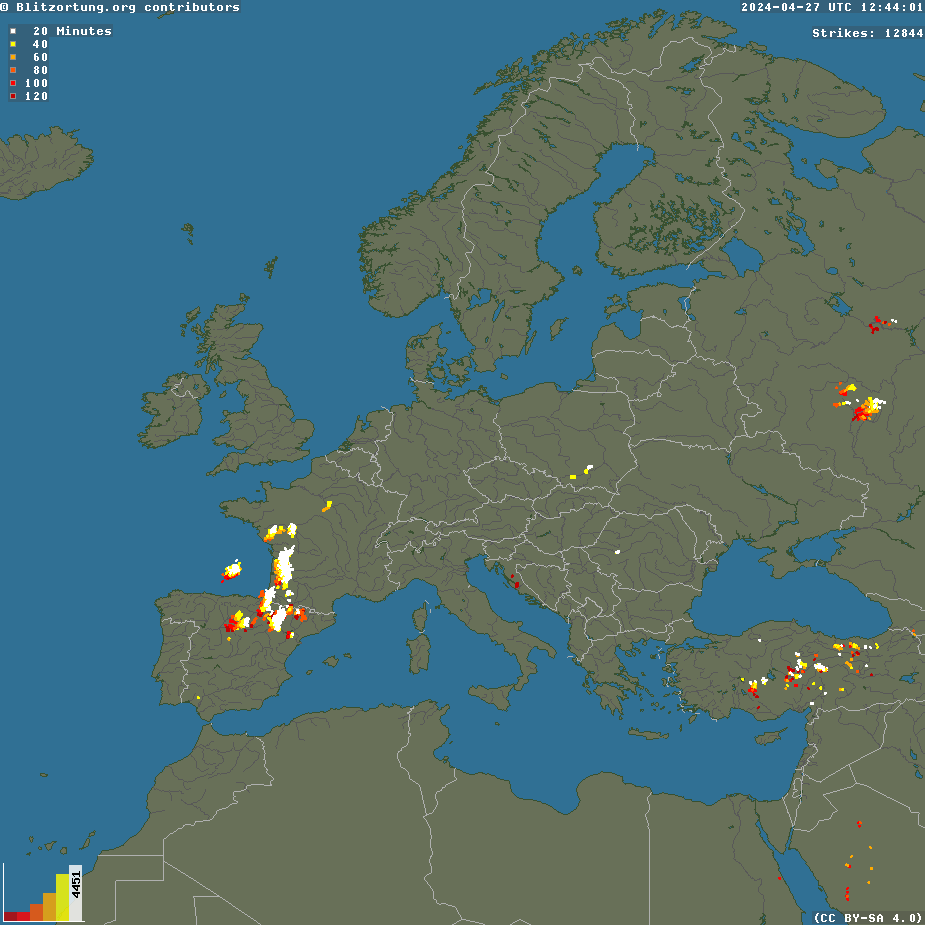
Unattended operations, signal
conditioning, spectrograms and RDF functions are
performed with SpectrumLab: http://www.qsl.net/dl4yhf/
. Many thanks to Wolfgang Buscher for his support.
Return to the index of www.vlf.it |